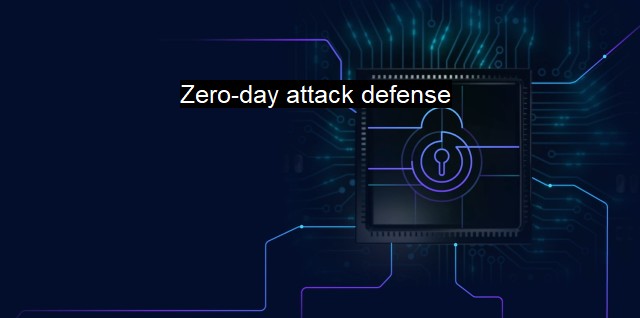What is Zero-day attack defense?
Enhancing Organizational Cybersecurity: Understanding Zero-Day Attack Defense and Antivirus Applications
A significant area of concern and interest is "Zero-Day Attack Defense." The phrase may sound complex, but unraveling its detail eventually casts light on its essential function. Delving into the concept of a zero-day attack, it is when a software’s unknown vulnerabilities are exploited by hackers or cybercriminals without giving the software developers any chance to create a defense system against it. The use of the term "Zero-Day" implies that these attacks occur on or before the first (or zeroth) day of vendor's knowledge, hence leaving no opportunity for the patch or preventive measures. Consequently, "Zero-Day Attack Defense" refers to strategies that targets to secure the system from such threats.A deep dive into zero-day attacks will reveal them as profoundly tactical and sophisticated cybercriminal plans, often reserved for high-value targets. The targets can include individuals, corporations, or even governmental institutions with a significant pool of sensitive information. The attackers would look for hidden vulnerabilities within the system and devise their attack strategy accordingly. The objective is stealth, taking advantage of the vulnerabilities and infiltrating the system such that the attack goes undetected while they achieve their aim.
As such, the nuances of a Zero-Day Attack Defense strategy comprise a layered approach. An attempt is made to mitigate the risks of attack by combining different security measures, thus creating multiple layers of defense, often referred to as "defense in depth." This kind of strategy consists of several components to defend different areas of an infrastructure, and frequently, each component provides backup security for the others.
At the core of Zero-Day Attack Defense strategies is the prediction of potential vulnerabilities and hacker behavioral patterns. By continually monitoring and updating the system, IT experts aim to stay one step ahead of cybercriminals. Some advanced defense systems use machine learning algorithms, artificial intelligence, and data science to analyze trends and predict possible attack vectors.
Also, Incident Response Plans (IRPs) plays a pivotal role in this layered approach to bhcybersecurity. The IRP details steps to take in case of a security incident, ensuring the least possible damage. Hence, this action plan focuses on damage control and post-attack recovery, helping the organization restore normalcy at a steady pace.
Another aspect of the defense strategy involves intrusion detection systems (IDS) and intrusion prevention systems (IPS). These de facto defense mechanisms continually monitor the network and evaluate the flow of data packets. It checks for inconsistencies, suspicious activities, and potential hazards that may compromise the system’s security. Virtual Private Networks (VPN), Endpoint Security and Firewalls serve as the frontline defense in this war against cyber-attacks. These security tactics scramble and encode data, posing extra difficulties for attackers that try to breach the system.
It is crucial to remember that even the best Zero-Day Attack Defense strategies are incapable of providing complete, foolproof security from such attacks. Cybercriminals keep devising new methods to circumvent defense strategies. Hence the phrase, the "security is not a product, but a process" resonates strongly here. Cybersecurity professionals need to remain vigilant, updating and modifying defense strategies constantly according to emerging threats and vulnerabilities.
In the world overflowing with advanced technology, cybersecurity has become very pertinent. Zero-Day Attack Defense, in such light, is not merely an additional feature in the software domain but a crucial necessity for methodical cybersecurity. Its principles and applications form a significant part of modern utility security systems and have become a lifeline for anyone wishing to store, manage, or process data securely in cyberspace.

Zero-day attack defense FAQs
What is a zero-day attack?
A zero-day attack is a type of cyber-attack that exploits an unknown software vulnerability. It is named after the fact that the attack occurs on the same day as the vulnerability is discovered, giving no time for the software developer to create a patch or fix.What is zero-day attack defense?
Zero-day attack defense is a set of techniques and tools used to protect computer systems and networks from zero-day attacks. It involves continuously monitoring for unusual behavior, analyzing software code for vulnerabilities, and patching software and systems as quickly as possible.How does antivirus software protect against zero-day attacks?
Antivirus software uses a variety of techniques to protect against zero-day attacks. One approach is behavior-based detection, where the software monitors for unusual activity and flags it as suspicious. Another approach is heuristics, where the software uses machine learning to identify potential threats based on their characteristics. Finally, some antivirus programs maintain a large database of known vulnerabilities and their associated patches to quickly protect against new attacks.Is it possible to completely protect against zero-day attacks?
No, it is not possible to completely protect against zero-day attacks. However, using a combination of security techniques such as regular software updates, antivirus software, and employee training can help reduce the risk of a successful zero-day attack. It's important to remember that security is not a one-time fix, but an ongoing process that requires constant attention and adaptation.| | A | | | B | | | C | | | D | | | E | | | F | | | G | | | H | | | I | | | J | | | K | | | L | | | M | |
| | N | | | O | | | P | | | Q | | | R | | | S | | | T | | | U | | | V | | | W | | | X | | | Y | | | Z | |
| | 1 | | | 2 | | | 3 | | | 4 | | | 7 | | | 8 | | |||||||